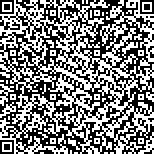| 摘要: |
| [摘要] 目的 探讨造影增强经食道超声心动图(TEE)评估射频消融术前房颤患者的左心耳血栓及功能检出情况及应用价值。方法 选择2020年10月至2020年12月于四川大学华西医院就诊并拟行射频消融术的房颤患者20例,均行常规TEE及造影增强TEE检查。评估两种方法左心耳功能指标(左心耳排空、充盈速度)和左心耳血栓的检出情况。结果 造影增强TEE检查所得左心耳排空及充盈速度指标较常规TEE快,且检出左心耳排空速度≤0.35 m/s的患者数更少,差异有统计学意义(P<0.05)。常规TEE检查见左心耳可疑血栓及自发显影患者5例,经增强造影后左心耳均未见明显充盈缺损。20例患者均接受射频消融手术,在术中、术后3 d和术后3个月均未发生明显栓塞事件。结论 造影增强TEE检查可提高左心耳血栓诊断的准确性。 |
| 关键词: 房颤 射频消融 左心耳血栓 经食道超声心动图 |
| DOI:10.3969/j.issn.1674-3806.2022.02.13 |
| 分类号:R 455 |
| 基金项目:四川省卫生健康委普及应用项目(编号:18PJ374) |
|
| A study on contrast-enhanced transesophageal echocardiography to assess left atrial appendage thrombus and function in patients with atrial fibrillation before radiofrequency catheter ablation |
|
LIU Zhi-yue, LI Qian, HAUNG He, et al.
|
|
Department of Cardiology, West China Hospital of Sichuan University, Chengdu 610000, China
|
| Abstract: |
| [Abstract] Objective To investigate the role of contrast-enhanced transesophageal echocardiography(TEE) in assessing left atrial appendage thrombus and function detection and application value in patients with atrial fibrillation before radiofrequency catheter ablation. Methods Twenty patients with atrial fibrillation who sought medical advice in West China Hospital of Sichuan University from October 2020 to December 2020 and planned to undergo radiofrequency catheter ablation were selected, and all the patients underwent conventional TEE and contrast-enhanced TEE. The left atrial appendage function indexes(left atrial appendage emptying, filling velocity) and the detections of left atrial appendage thrombus in the two methods were assessed. Results The indexes of left atrial appendage emptying and filling velocity obtained by contrast-enhanced TEE were faster than those obtained by conventional TEE, and the number of the patients with left atrial appendage emptying velocity ≤0.35 m/s detected by contrast-enhanced TEE was less than that detected by conventional TEE, and the differences were statistically significant(P<0.05). The conventional TEE examination showed suspicious thrombus and spontaneous imaging of the left atrial appendage in 5 cases. No obvious filling defects were found in the left atrial appendage after contrast-enhanced angiography. All the 20 patients underwent radiofrequency catheter ablation, and no obvious embolic events occurred during the operation, 3 days after the operation, and 3 months after the operation. Conclusion Contrast-enhanced TEE examination can improve the accuracy of diagnosis of left atrial appendage thrombus. |
| Key words: Atrial fibrillation Radiofrequency catheter ablation Left atrial appendage thrombus Transesophageal echocardiography(TEE) |

